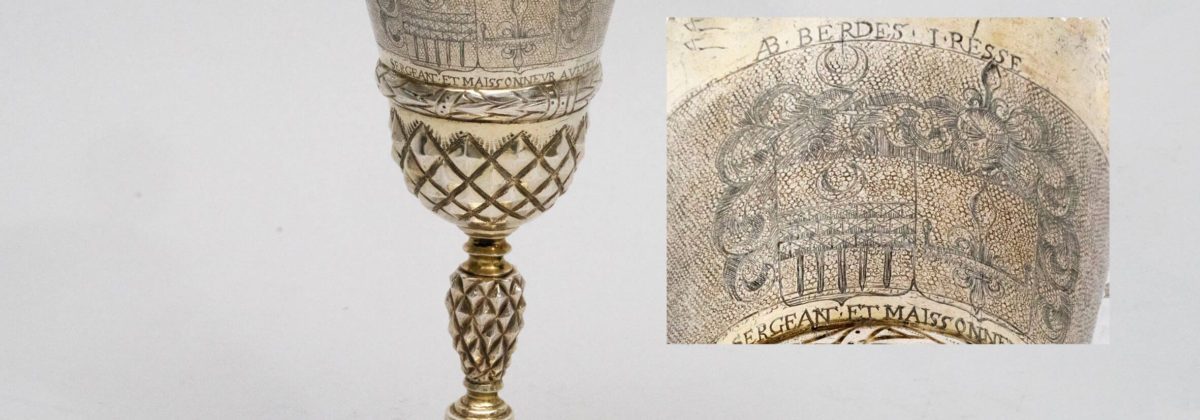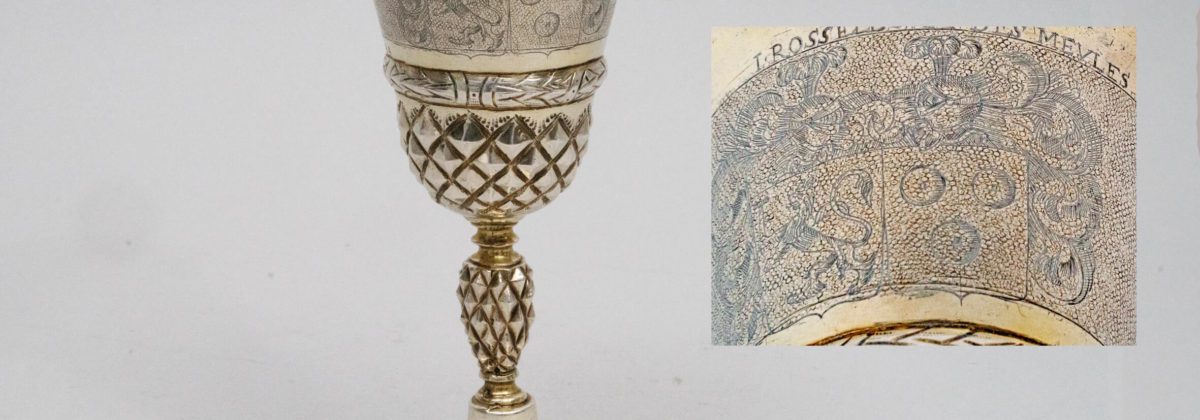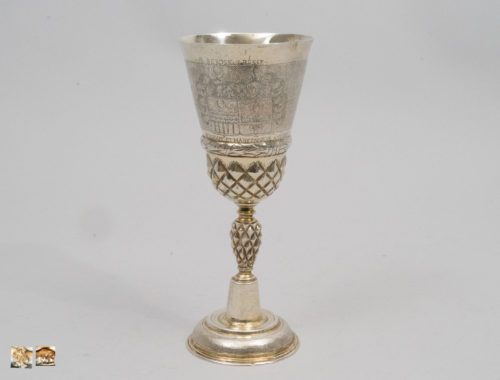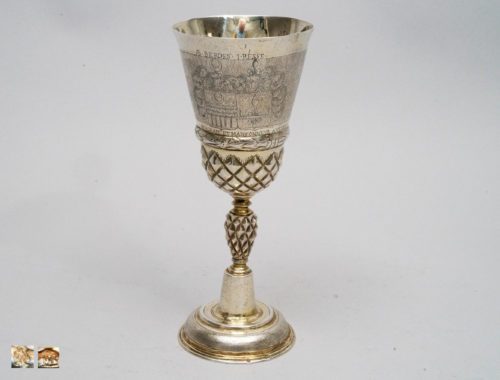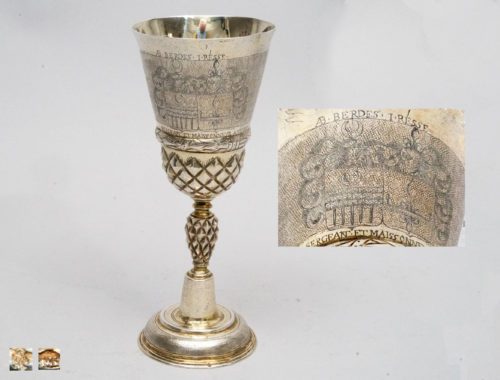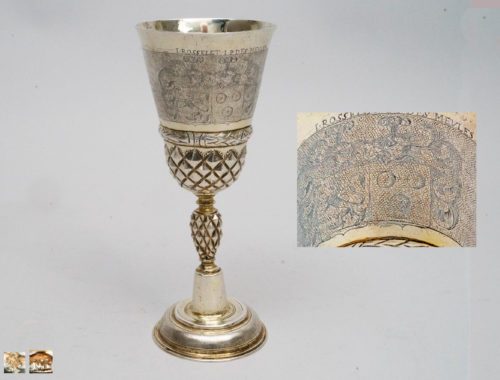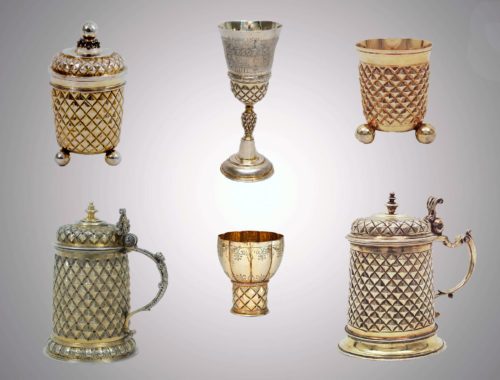Detailed Description
AUGSBURG SILVER, GILT CUP
Since the 16th century, the goblet has developed as a type of drinking vessel directly from the church chalice or ciborium. This silver goblet represents a very interesting, early drinking vessel in first-class, original condition.
The tapering, elongated bowl bears 2 engraved, elaborately designed coats of arms on a structured snakeskin background, inscriptions above and below
“I.ROSSELET I.P. DES MEVLES’ AB BERDES I RESSE ‘SERGEANT ET MAISSONNEVR A VEVEY 1684′,
with a ribbon-tied laurel band over a tapered lower body with embossed diamond decoration. Shaft also with diamond decoration. The profiled base is arched. It is very finely provided with punched fields that have been left smooth. The shaft with diamond decoration stands out very gracefully in the middle.
The original gilding outside and inside.
Master: Mathäus Blank (Plank)
Born around 1584, master around 1615, (joined the painters’ guild in 1616) died in 1657
HISTORICAL AND ARTISTIC CONTEXT
Drinking alcohol in public has not been judged negatively since the 16th century. On the contrary, binge drinking was a feat. The nobility even showed their strength in drinking. Women were also not behind when it came to drinking. In the 17th century it was therefore common to create fixed drinking habits at the table among high society.
The central role of alcohol (mainly wine and beer) can also be understood through the variety of drinking vessels. The goblet finds a variety of forms in the 16th and 17th centuries. In any case, the high shape of the cup represents a special feature or a status symbol for the drinker.




